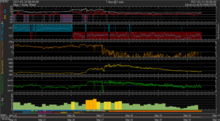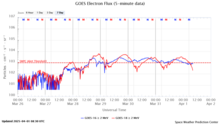news
Submitted on 2025-05-07
A large sunspot group rotated onto the solar disk on 28 April. Despite its size, NOAA 14079 remained all in all quiet in terms of flare production.
Submitted on 2025-04-28
You're kindly invited to submit abstracts for the E-SWAN session titled "Communicating Science Through Aurora: Engaging the Public in Space Weather" at the upcoming ESWW 2025.
Submitted on 2025-04-23
The earth environment is currently under the influence of a solar wind stream associated with a huge coronal hole.
Submitted on 2025-04-17
On 8, 9 and 10 April 2025, the EUI team welcomed 85 leading solar physicists, in person and online, to participate in an international workshop on the future of the ESA/NASA Solar Orbiter mission.
Submitted on 2025-04-14
On 12 and 13 April, some filaments erupted and were associated with earth-directed coronal mass ejections.
Submitted on 2025-04-08
A complex eruption took place on the Sun's far side early on 5 April.
Submitted on 2025-04-01
The high-speed wind stream associated with a large coronal hole affected the earth environment from 26 March onwards.
Submitted on 2025-03-28
NOAA 4046 was the source of a surprize X1 flare which, following interaction with a nearby prominence, produced an impressive coronal mass ejection. The bulk of the CME is not directed to Earth. ***UPDATED***
Pages
Zircon - This is a contributing Drupal Theme
Design by
WeebPal.















































